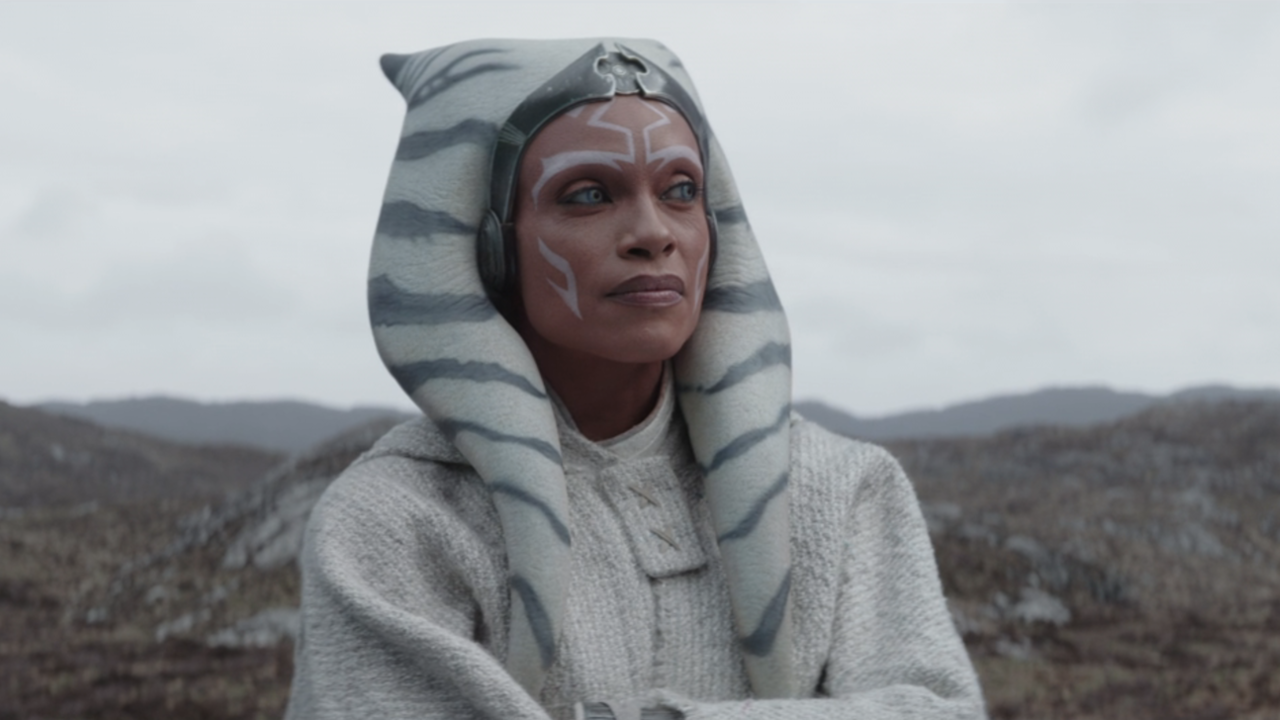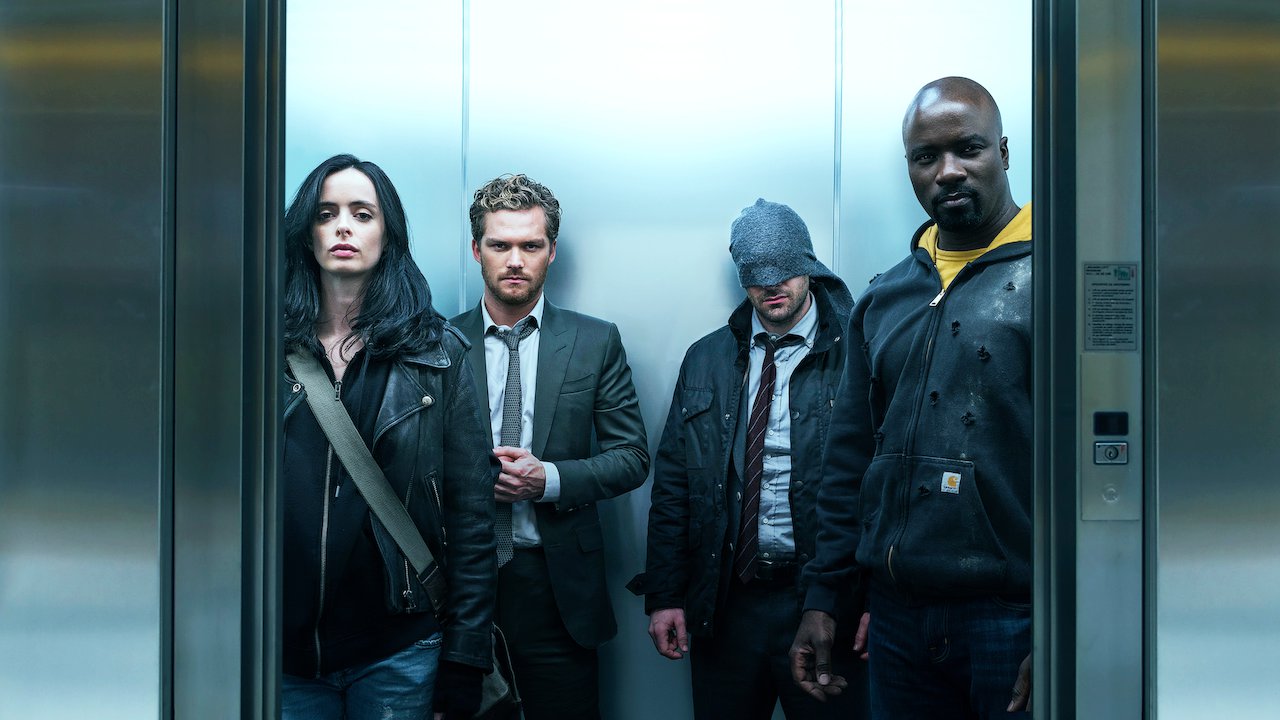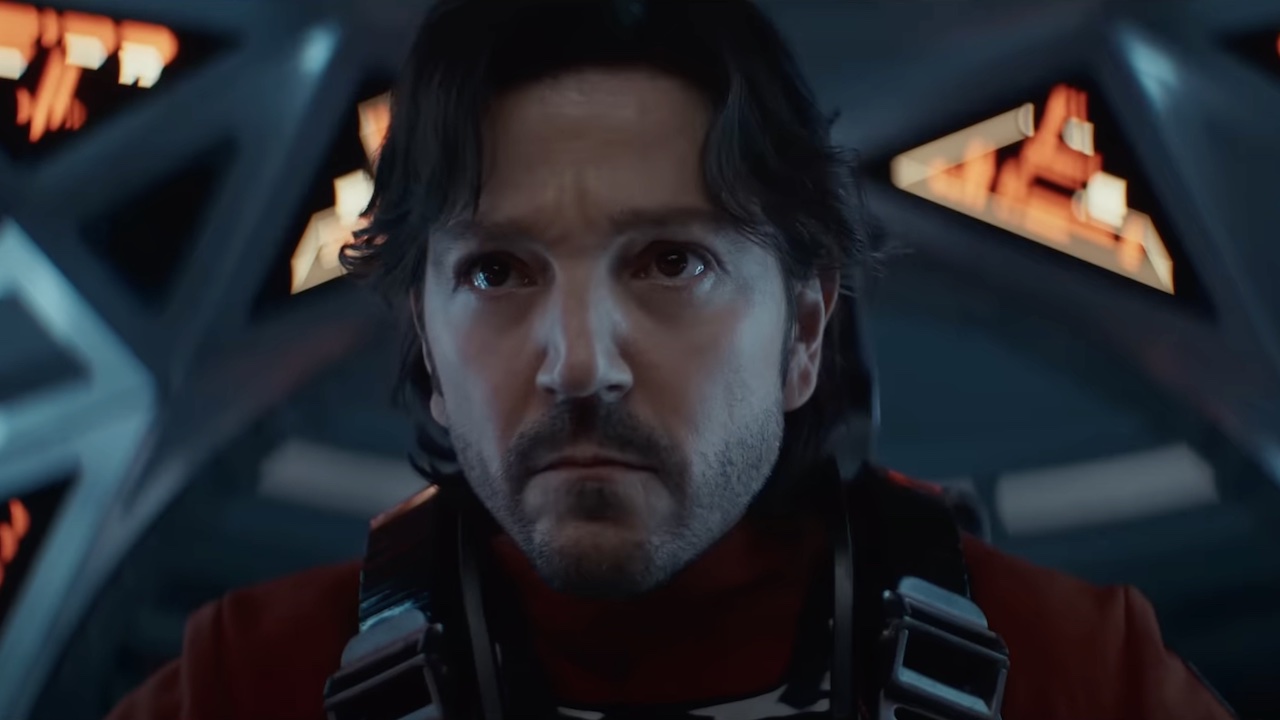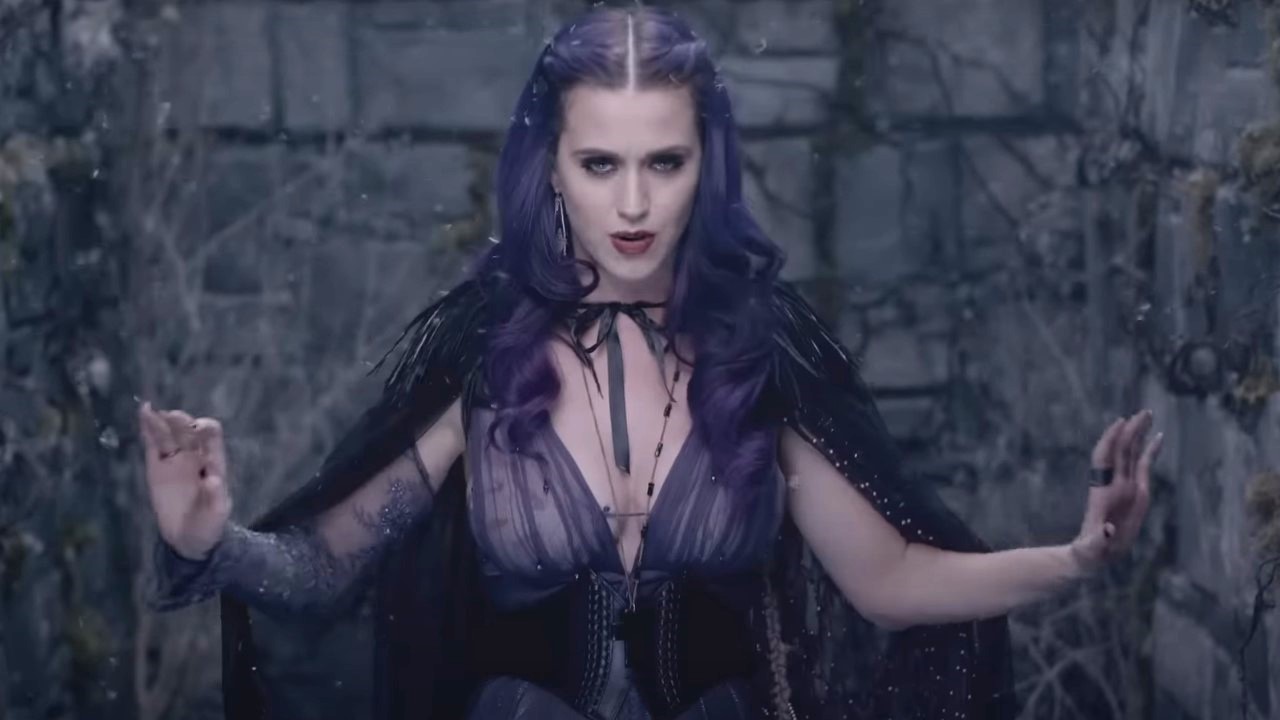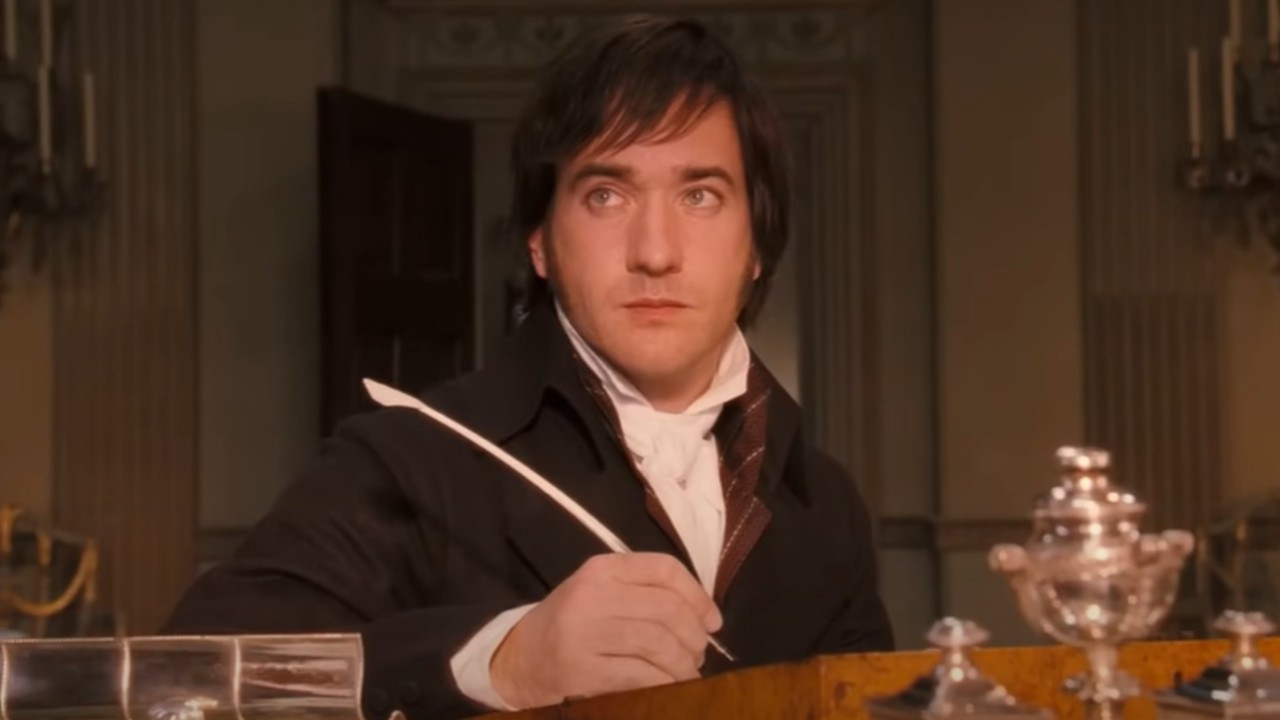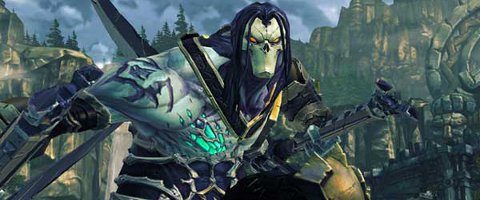
Before playing Darksiders 2, I would've summed the game up as follows: "The Grim Reaper murders everyone with matching scythes." However, I soon realized that this is a more accurate summary: "The Grim Reapers murders everyone with matching scythes when he isn't pulling levers or climbing poles." Darksiders 2 is an occasionally brilliant hack-and-slash game that is diluted by parts that aren't much fun at all.
Darksiders 2 takes place in the same time period as the first Darksiders. War, one of the Four Horsemen of the Apocalypse, has been falsely accused of a crime. His brother, Death, must travel through realms both living and dead in order to prove his innocence.
The game is a semi-open-world RPG. You can freely explore each of the main worlds of the game as they're unlocked. Side quests and treasures await the thorough player in each area. Each map is gorgeous, massive and distinctive. It's hard not to want to explore it, considering you can do so on the back of an undead horse.
The simple act of being Death feels good. I feel like a 8-year-old boy for saying this but: he's the coolest. The dual scythes, the skull-shaped mask, the raspy voice - every little part of this dude makes you want to play the game. I can't think of a character I'd more like to have on the cover of my Trapper Keeper.
Death isn't just a re-skin of War from Darksiders 1. He's a much more agile combatant. He dodges rather than blocks. His opponents frequently attack in packs or have more brute strength than him so you can’t just mash the X button until everything's dead. You have to do a lot of hit-and-run, slowly wearing enemies down before swooping in for the kill. The combat's tense and exciting even on Easy.
There’s an impressive RPG framework behind the combat, by the way, so you can really feel Death growing stronger. Death levels up by killing enemies and can use these points to pursue two different skill trees. Enemies drop armor and weapons with randomized stats, which you can trade with friends via an in-game mail system. Furthermore, any gold that Death earns can be spent in a hub town’s shop on equipment. Gold can also be used to unlock new combo moves. By the end of the campaign, you’ll be decked out in incredibly bad-ass armor and have a deep selection of attacks to choose from.
Whatever energy I felt while rampaging through the overworld immediately evaporated once I stepped inside one of the game's dungeons, though. This is where the other two main gameplay elements kick in: platforming and puzzles. Such things just don't suit Death very well.
CINEMABLEND NEWSLETTER
Your Daily Blend of Entertainment News
The platforming is occasionally fun. For example, there's a thrilling sequence where Death climbs to the top of an airship. However, outside of rare crafted events like this, platforming is a very bland process that slows the game's pace to a crawl. You swivel the camera around the room looking for handholds on the wall and then slowly pick your way across the room with trial-and-error jumping. The dungeons tend to be a lot less visually appealing than the overworld so quickly the environment melts away and all you see are a series of interactive wall objects. It's not a forgotten tomb anymore; it's a wall run sequence followed by a climbable web next to a vertical pole. It far outweighs the amount of combat in each dungeon, too.
Like the platforming, the puzzles slowly add new elements over time. Once you get comfortable with switches, they give you throwable bombs that can flip switches from a distance. While this relaxed pace makes it easy to learn the ropes, it’s too slow to keep the puzzles engaging. It feels like there aren’t enough unique puzzle pieces to fill the entire game.
The puzzles are far more palatable when they’re part of combat. Each boss fight is on some level a puzzle, with a series of mechanics to master. You can’t just bulldoze bosses. If you can’t avoid their attacks, you’ll be wiped out quickly. If you don’t figure out how to expose their weakpoints, you won’t even scratch them. Discovering how to hurt an armored colossus with its own weapon seems a lot more appropriate to the game than rolling magic boulders into magic slots. It’s a shame that the latter is so much more common than the former.
Combat is what really works in Darksiders 2. It’s why people pick up a game with a muscular grim reaper on the cover: they want to slash fools with scythes. It’s the “promise of the premise,” to borrow a phrase from a screenwriting book. Death should be killing shit, that’s his thing. He shouldn’t be pacing back and forth looking for a pressure plate like he’s trapped in Tomb Raider 2. I really wish Vigil was able to single-mindedly improve the combat. I would’ve loved to have seen another skill tree, more types of non-boss enemies, and so forth. Instead, they wasted their time wondering what kind of boulder puzzles we’d like to see.
If you’re completely disinterested in everything but the combat, there’s a special place for you in Darksiders 2: The Crucible. This arena throws 100 waves of enemies at you, with rewards offered after every five waves. You’re able to enjoy the game’s frantic hack-and-slash play without wading through ten minutes of platforming first. If only the whole game was like that.
Darksiders 2, at its best, is a lightning-fast action game that requires strategic play and careful character customization. It’s a shame, though, that this wonderful game is swimming in a vat of flavorless, puzzle-platforming gruel. If Darksiders 3 ever comes to fruition, I really hope it just focuses on what works in this series: killing stuff.
Players: 1
Platforms: PS3, Xbox 360 (reviewed), PC
Developer: Vigil Games
Publisher: THQ
ESRB: Mature
Rating:

Staff Writer at CinemaBlend.
Like Nicole Kidman Before Her, This Is Us' Chrissy Metz Gets Candid About Why She Left Hollywood For Tennessee
One Of Harrison Ford's Best Movies Came Out 40 Years Ago, And No One Talks About It Anymore
WWE Fans Are Not Happy Campers About One Match Being Left Off The WrestleMania 41 Card, And I Couldn’t Agree More




